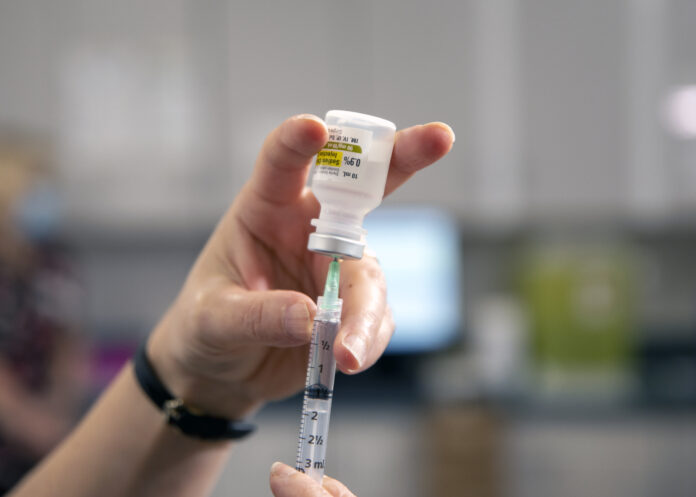Over 90 per cent uptake in long-term care as province continues first phase of vaccine plan
Saskatchewan has delivered vaccines to every long-term care home in the province.
The news was announced Tuesday. Additionally, 90 per cent of personal care homes have also received vaccines.
“There is not going to be an exact moment we can point to and say this pandemic is over, but there are going to be some important milestones along the way,” Premier Scott Moe said Tuesday.
“This is a significant milestone — having the first dose of vaccine offered to every long-term care resident in the province. We have now provided a significant level of protection to our parents, to our grandparents, to our family members in every long-term care home in Saskatchewan.”
The uptake of the vaccine was strong, with 91 per cent of long-term care residents choosing to receive the vaccine. Those who refused it, or were unable to receive it due to health concerns, are still eligible to get their first dose.
Saskatchewan is also making progress with second doses in long-term and personal care homes. Over half (53 per cent) of long-term care and 43 per cent of personal care homes have received second vaccine doses as well.
Over 10,000 doses have been distributed in the North Central Zone, with two-thirds receiving their second dose.
Saskatchewan has distributed over 100 per cent of the vaccine doses it’s received. The next closest province is at 86 per cent, and the national average is 81 per cent.
The first phase of Saskatchewan’s vaccination plan prioritizes adults over the age of 50, some health care workers and people who are medically vulnerable. The second phase will be conducted by age, with older residents becoming eligible first. The province hinted Tuesday that they’re looking at extending the time between first and second doses to allow more people to receive some protection from the first dose.
Moe said vaccine supply is set to pick up, with more doses due to Saskatchewan in March than the province has received to this point. That includes more doses of both Moderna and Pfizer, as well as 15,000 doses of the newly-approved AstraZeneca vaccine.
In preparation for that, Moe said the promised booking system, which will allow residents to call to set up a time to receive their vaccine or to book online, will be ready by next week.
The high percentage of vaccine uptake has Moe and Chief Medical Health Officer Dr. Saqib Shahab feeling confident.
“We should be ready to take any vaccine that is available when our age cohort comes up in the sequencing,” Shahab said, adding that continuing to follow measures such as wearing a mask, distancing and staying home when sick will be critical “until we have the bulk of our population vaccinated with at least one dose.”
He added that residents who are 60 or older, or above 50 with risk factors, “still need to observe extra caution until they’re vaccinated.”
While numbers are trending downward, they’re still higher than Shahab would like to see. Saskatchewan reported 134 new cases of COVID-19 Tuesday, along with 194 recoveries. Two more people died. Both were in their 80s, and one was from the North Central zone.
Saskatchewan has 1,492 active cases of COVID-19 and 154 people in the hospital.
The North Central Zone has 63 active cases and 12 people in the hospital. Saskatchewan has 20 people in intensive care — none are from the North Central Zone.
Prince Albert reported two new cases on Tuesday. There are 18 active cases of COVID-19 in the city. North Central 1 had three new cases and North Central 3 had no new cases Tuesday.
There were 2,175 tests conducted on March 1. Of those, 102 were conducted in the North Central Zone.
Nationally, Saskatchewan still has the highest rate of active COVID cases per 100,000 population with 132. The national average is 80.
With 85 new cases per day over the last seven days, Saskatchewan also has the highest rate of new cases in the country.


